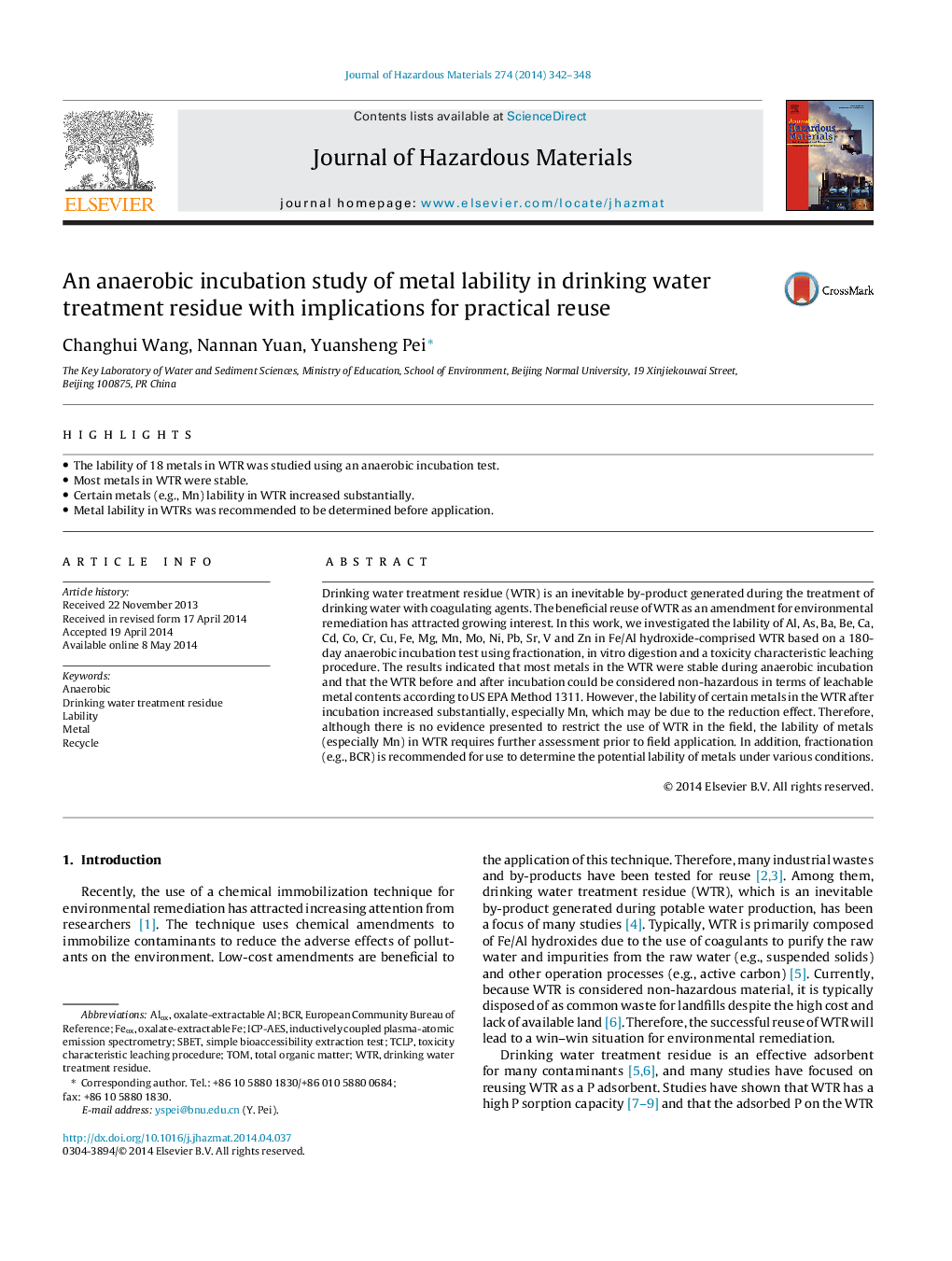| Article ID | Journal | Published Year | Pages | File Type |
|---|---|---|---|---|
| 576708 | Journal of Hazardous Materials | 2014 | 7 Pages |
Abstract
Drinking water treatment residue (WTR) is an inevitable by-product generated during the treatment of drinking water with coagulating agents. The beneficial reuse of WTR as an amendment for environmental remediation has attracted growing interest. In this work, we investigated the lability of Al, As, Ba, Be, Ca, Cd, Co, Cr, Cu, Fe, Mg, Mn, Mo, Ni, Pb, Sr, V and Zn in Fe/Al hydroxide-comprised WTR based on a 180-day anaerobic incubation test using fractionation, in vitro digestion and a toxicity characteristic leaching procedure. The results indicated that most metals in the WTR were stable during anaerobic incubation and that the WTR before and after incubation could be considered non-hazardous in terms of leachable metal contents according to US EPA Method 1311. However, the lability of certain metals in the WTR after incubation increased substantially, especially Mn, which may be due to the reduction effect. Therefore, although there is no evidence presented to restrict the use of WTR in the field, the lability of metals (especially Mn) in WTR requires further assessment prior to field application. In addition, fractionation (e.g., BCR) is recommended for use to determine the potential lability of metals under various conditions.
Related Topics
Physical Sciences and Engineering
Chemical Engineering
Chemical Health and Safety
Authors
Changhui Wang, Nannan Yuan, Yuansheng Pei,
